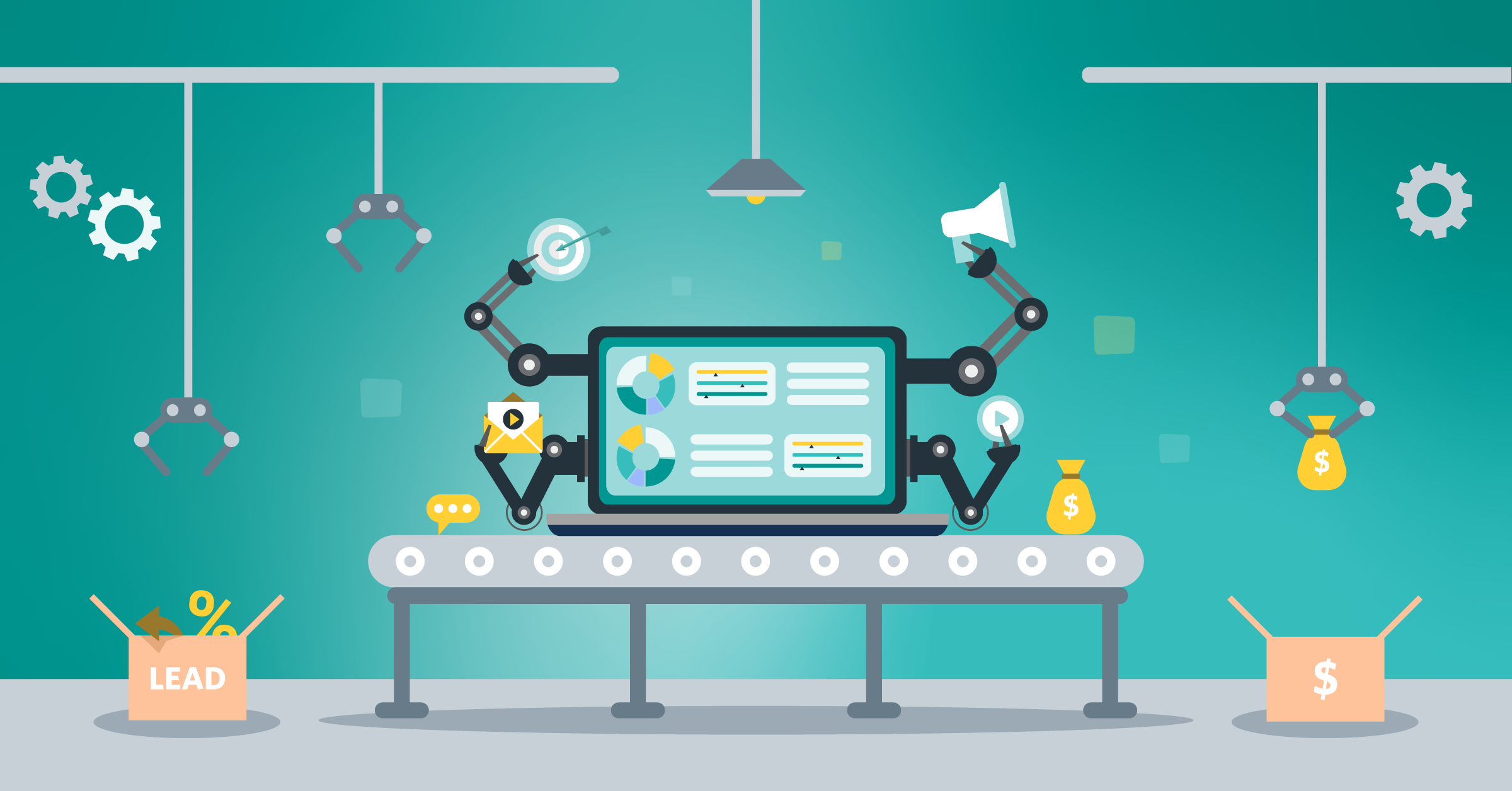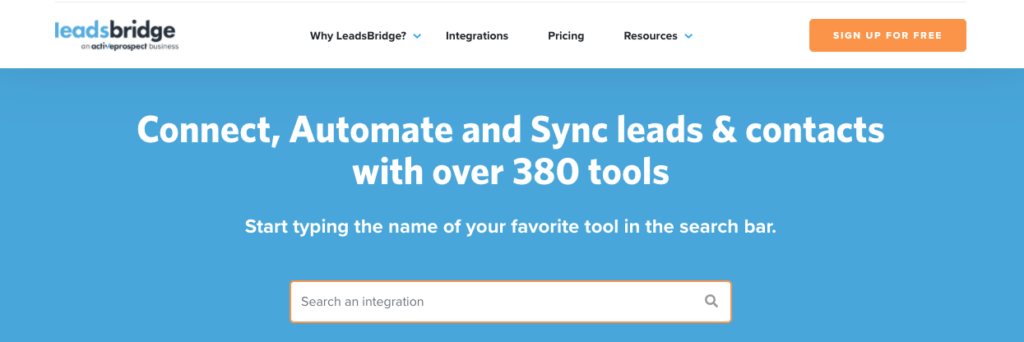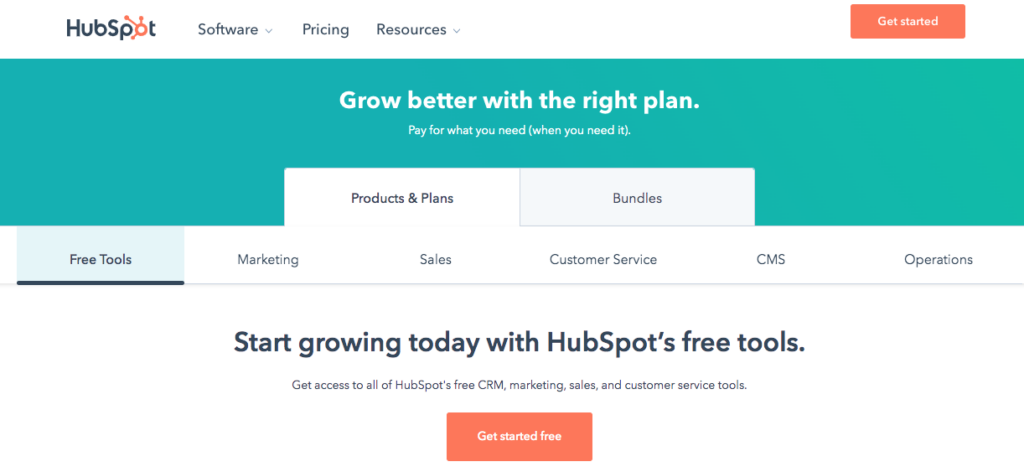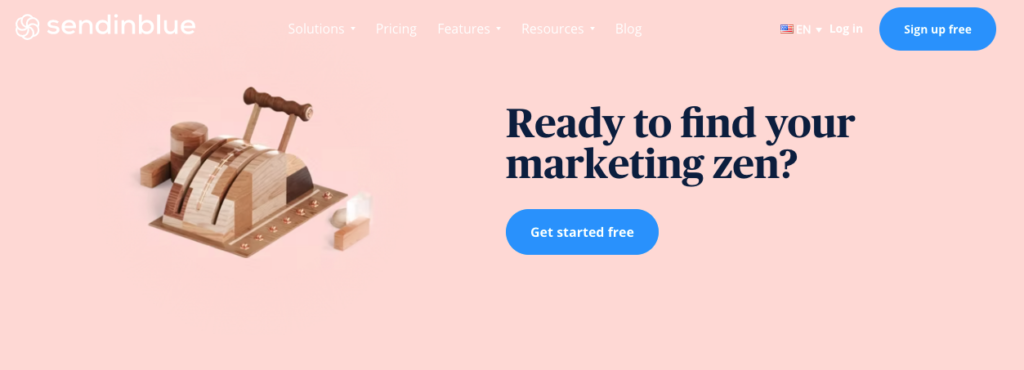
One of the common challenges businesses encounter is generating leads and retaining customer loyalty. Besides these objectives, each company has to collect a massive amount of data and use it to create marketing-centric systems.
These issues are solved using automation, which is essentially the integration of end-to-end data bridges into complex marketing systems.
- What is marketing automation?
- How to implement a marketing automation strategy: Step-by-step
- Pros and cons of marketing automation for B2B and B2C businesses
- Best marketing automation strategy (with examples)
- How to implement a marketing automation strategy for your funnels
- How does marketing automation affect your customers?
- The best free marketing automation platforms
- Role of LeadsBridge in a successful marketing automation strategy
- Final thoughts
In this article, we’ll cover everything you need in your toolkit to create a successful marketing automation strategy, including easy-to-use integrations, such as:
What is marketing automation?
Marketing automation is the process of arranging different marketing workflows on an automated platform or program.
Instead of manually handling each task, you can use predefined triggers to manage all marketing and sales flows on autopilot.
The best marketing automation strategies focus on automated workflows and customer-driven triggers linked together in an omnichannel way.
Marketing automation offers numerous advantages. Check out these statistics, for example.
Marketers who use automation can see up to a 77% increase in conversion rates. Additionally, 75% of email revenue comes from triggered communications.
Learn more about automated lead data management here.
How does marketing automation work?
Marketing automation uses digital tools to automate manual marketing tasks. For example, social media automation tools, email management software, and ad campaign optimization platforms.

Check out this use case-specific guide to automation for marketing agencies.
Why do you need marketing automation?
Besides streamlining repetitive workflows, marketing automation helps you deliver a better user experience via personalization.
Similarly, it allows you to:
- Segment prospects into appropriate lead lists based on marketing strategy.
- Improve lead nurturing, schedule drip campaigns, and increase brand awareness and user experience.
- Generate insights and analytics displaying campaigns’ performance.
- Foster leads into the sales funnel, aka marketing funnel automation.
Characteristics of robust automation software
A great marketing automation strategy and software should consider these characteristics:
- Compatibility with the target industry
The size of your business and what it offers, whether it’s a business-to-business or business-to-consumer company, and the exact niche markets. Find the solution that caters to your kind of business.
- Must-have features and applications
There are tools for simple automated email marketing workflows to full-fledged integrated marketing solutions. Which features does your business need? Get your automation solution accordingly.
- Internal or external focus
Find a solution suited to you, which is focused on the external flows (ad campaigns) like Salesforce® or internal processes (marketing resource management) like Slack.
Discover how to integrate Facebook products with Salesforce®.
- Integration capacity
While some offer native integrations, other tools don’t. You need to bridge the gap between sales, marketing, customer service, and other marketing processes via tools like LeadsBridge.
CRM vs. marketing automation
Customer relationship management (CRM) tools and automation software perform different functions. Here is an outline of CRM vs. marketing automation tools:
A CRM tracks contacts, deals, pipelines, and every touchpoint so reps can nurture relationships and close revenue. For instance, follow-ups, notes, forecasts, and handoffs that don’t get dropped.
Marketing automation builds, schedules, and measures cross-channel campaigns (email, SMS, social, ads), handles segmentation and lead scoring, and scales.
So how do they work together? Automation fills the funnel while your CRM converts it.
If they’re not integrated, you’ll have stale data and most probably many missed opportunities on your hands.
How to implement a marketing automation strategy: Step-by-step
To get the most out of marketing automation, you need to integrate automation across all your silos and connect your teams by automating your marketing touchpoints.
Based on your business’s size or model, you can design your strategy to meet the following criteria. Here’s how to implement a marketing automation strategy:
Step 1: Start by automating your lead capture
Before a conversion can take place, likely buyers should become aware of your brand and what you offer.
While automation is more effective during the decision-making stage (such as abandoned cart messages or leads who have made inquiries), there is still plenty of room for automation at the top of the funnel.
For example, you can use it to run lead ads that offer demos or tutorials and respond to social media users searching for your products.
Step 2: Organize your contacts using a CRM
With a CRM that integrates with your automation software, you can optimize and manage leads as they come in. You can also use these data points to connect customers to the next step of their journey.
Find out more about what a CRM integration is and how to use it.
Step 3: Turn your leads into conversion-ready prospects
At this stage of the funnel, automation helps convert their interest into purchase decisions.
This could be through a well-timed email offering hard-to-refuse discounts and limited-time offers, abandoned cart reminders with or without a bonus, or even free giveaways.
Step 4: Offer value and receive repeat visits in return
Only a few years ago, post-purchase automation did not get the attention it deserved. But with the new flywheel model for sales, a repeat customer is regarded as the core element in the sales cycle.
Automation can be extremely useful to keep current customers pleased with your services and encourage them to come back again and again. For instance, by sending automatic reminders to boost future subscriptions, upgrades, or sales.
Check out this complete guide to your marketing qualified leads.
Step 5: Gather insights automatically
Identifying what touchpoints could benefit from automation helps you build more successful future campaigns. Automation also lets you gather insights from traditional metrics, feedback campaigns, or complex A/B tests.
This data then helps you build a long-term relationship between the customer and the business.
Pros and cons of marketing automation for B2B and B2C businesses
Automating these workflows can increase the success rates many times over.
However, the advantages and disadvantages are different for B2C and B2B companies. Let’s take a closer look:
B2B vs. B2C marketing automation
Let’s compare a few similar elements for both B2B and B2C businesses:
B2B marketing automation
Buyers’ journey: B2B marketing automation is centered on journey-based advertising and lead nurturing to educate prospects on their products.
Segmentation: Due to the smaller number of their target audience, B2B businesses create more detailed profiles for each contact with the help of CRM software.
Channels: B2B teams often use a single-dimensional approach when it comes to channels. Unlike B2C, this is because the end-users are looking for value rather than convenience.
B2C marketing automation
Buyers’ journey: B2C marketing automation deals with shorter sales cycles and has less time to find potential buyers. So they use more branding and are also more conversion-focused.
Segmentation: B2C businesses target a much larger audience, so they need to build close relationships with prospects in their niche.
Channels: B2C automation solutions are built on a multichannel approach to integrating various data.
Running a B2C business? Discover the top 9 important tasks you should automate today!
Pros and cons of marketing automation for B2C businesses
B2C automation solutions are accessible to small business budgets and are designed particularly for B2C purposes.
The main advantages of B2C marketing automation are:
- Offering flexible segmentation
- Real-time behavior tracking
- Ecommerce integrations for offline and online stores
- Personalized content for users
- Creating multichannel flows and tools
- Performing A/B testing
The most significant disadvantage of B2C marketing automation is the cost. Most small start-ups struggle with tight budget management.
However, investing in these platforms and integrating them into your strategy will pay off in the long run.
Learn about online advertising costs on the most popular platforms.
Pros and cons of marketing automation for B2B businesses
To build an adequate B2B automation strategy that enables you to win over the competition and complexities, and get results, calls for the right tools and tactics.
The main benefits include:
- Helping to implement an account-based system
- Creating lead scoring management
- Ensuring marketing-sales alignment
- Improving client satisfaction
- Providing instant customer support
- The ability to perform A/B testing
Here again, the cost is a factor but less of an obstacle for B2B start-ups compared to B2C start-ups. Moreover, B2B marketing automation could sometimes lead to over-messaging and annoying the end receivers.
Best marketing automation strategy (with examples)
The best-in-class businesses use systems to generate leads, nurturing their old leads and clients while offering value throughout the customer lifecycle.
On the other hand, the best strategy you can have is maintaining a flexible system. It needs to consider the entire lifecycle from first touch to the final conversion and post-sale.
Here, we go over the top four aspects of a rounded marketing automation strategy and how to implement them.
Marketing automation content strategy
What does your ideal customer do at each step of the funnel? Map their journey and write one core message for each step.
This allows you to tie each to a specific trigger and create reusable content blocks like headlines, product cards, proof, and FAQs for each step.
Next, set boundaries for your content, such as:
- Frequency caps
- Quiet hours
- Channel priority (email, push, SMS for promos, etc.)
Run one test at a time on each of these and keep only what has served your campaign.
Here’s a great marketing automation content strategy workflow example by Slide Team:

SMS marketing automation strategies
There are several ways you can plan and initiate an SMS marketing automation strategy.
- A welcome series explains value, shows proof, and offers a next step.
- Onboarding pushes one key action within 48 hours.
- Post-purchase messages teach care, suggest a match, and ask for a review.
- Education pieces link to short, evergreen guides that match the person’s category.
It’s essential to use this channel for time-sensitive and other consequential communications. Also, you need to track the few metrics that matter along the way, like activation, revenue per send, and opt-outs.
Take a look at this SMS marketing automation strategy example by PGA:

Omnichannel orchestration and measurement
If you run omnichannel marketing, you might end up spamming people or wasting your budget without orchestration. Every message should have a job.
And you can do this by having a system that keeps all your team members aligned and helps run all your campaigns so that they complement one another.
Here’s how to do it:
- Create one profile per person with IDs, events, traits, and simple predictions.
- Define four trigger types: event (did X), state (entered Y), date (when Z), and external signal (price, stock, weather).
- Set channel rules: priority order, frequency caps, quiet hours, and a fallback if delivery fails.
- Add eligibility rules: margin checks, recent complaints, recent purchases, and returns.
- Use modular content so blocks swap by segment, value, and context.
- Track your revenue, opt-outs per 1,000, time-to-purchase, and support tickets created.
Keep in mind to review your results monthly, so you can scale and optimize your campaigns with more reach and budget.
LeadsBridge marketing case study
As a third-party tool with complex features, LeadsBridge combines marketing with learning. While providing value to their readers through useful marketing guides and tips, we use blog posts to introduce integrations that enable marketing automation.

This is convenient for our audience while being an effective method to generate leads for LeadsBridge. A win-win solution is the most effective and authentic approach to any kind of marketing.
LeadsBridge also offers detailed whitepapers that educate readers about tactics useful to marketers, such as ensuring the success of marketing efforts and keeping their systems up-to-date.
Here is a handy whitepaper for crafting a successful lead management strategy:
How to implement a marketing automation strategy for your funnels
How do you plan marketing automation for your funnel?
Creating your marketing automation strategy
This means automating the communication gap between:
- Potential customers and your company, so they can become aware of your products or services, make them interested in your campaigns, and ultimately encourage conversions.
- Your business and purchase-ready leads in order to help finalize their intent to become paying customers.
- Your company and existing clients in the post-conversion stage.
Also, you need to have clear goals and objectives that guide your strategy.
Setting your automation objectives
More often, the tools you are already using can be integrated into your marketing automation objectives.
The best marketing automation software is a one-size-fits-all solution for online marketing. So all you need to do is integrate them with other points in your marketing stack, using a third-party integrator such as LeadsBridge.
Selecting the best marketing automation solution
By defining your business’s requirements and budget, you can decide which marketing automation software solution to pick.
How to plan marketing automation and determine whether the software matches your objectives? Here are some factors to consider:
Features: Outlining what you need, you can avoid paying for features you don’t use.
Ease of use: Look for an intuitive interface and easy usability that demands minimal learning and training.
Available integrations: See if they can be integrated with your required third-party systems, such as Salesforce®, Mailchimp, etc.
Support: Choose a platform with an excellent rating for support.
Pricing: The pricing models of marketing automation software should match your own business budget model. Besides upfront costs, look for any hidden fees.
Specify which apps to implement
To understand how to implement marketing automation the right way, you need to have both external and internal resources in place. This includes your support staff, tools, and all other factors.
Here are the two important factors often least considered:
- Starting with a simple plan around the main workflows gives you room to create a strong foundation.
- Consider hiring an automation consultant to help you plan and implement your marketing automation strategy.
You can contact the LeadsBridge support team to ask any questions about automation or request a demo.
You can also visit LeadsBridge’s Help Center to find out the best automation solutions and tips for your business.
How does marketing automation affect your customers?
Automation helps your business, but also enhances your customers’ experience.
When looking for answers, the customers are often overwhelmed with information that they need to sift through. Here are some ways it can benefit your customers:
- Presenting them with more relevant content. For example, you can use the buyers’ journey to create behavioral targeting, from ads to email campaigns and post-sale support.
- Use integrations for automating your email and SMS campaigns for timely responses.
- Manage leads on a first-things-first basis. Your support team can provide adequate and real-time responses to any incoming questions.
- Use the lead data in your CRM to research your audience’s preferences and even send automated responses based on the customer journey.
- Run omnichannel marketing that focuses on user experience and the general quality of interaction between you and your customers.
And LeadsBridge integration for running automated SMS campaigns:
The best free marketing automation platforms
LeadsBridge

LeadsBridge is used for both marketing and sales flow automation by allowing businesses to improve their omnichannel presence.
It basically connects a source (i.e., Google lead forms) with a destination (i.e., a Mailchimp CRM) and automates data sync between the two.
Why LeadsBridge? Using LeadsBridge has many advantages, including automating the entire process, avoiding any manual importing task, real-time data sync from your lead source, letting the sales department reach leads as they come in, and more.
LeadsBridge offers over 380 integrations, most of which are included in the free plan. Learn more about LeadsBridge freemium.

HubSpot

HubSpot is one of the best free marketing automation platforms, designed for the management of inbound marketing and sales.
It helps businesses attract leads, convert them, and close sales by streamlining multiple workflows. This way, both marketing and sales departments can maintain and manage their efforts using a single tool.
Check out these most-in-demand HubSpot integrations:
HubSpot free plan includes:

Integrate HubSpot with LeadsBridge using this guide.
Mailchimp

Mailchimp enables you to organize and communicate with your leads and customers. As mentioned on their website, they focus on “healthy contact management practices, beautifully designed campaigns, and powerful data analysis.”
It is an affordable and easy-to-use platform that helps create, execute, and analyze email and ad campaigns.
Mailchimp is first an email marketing tool that offers CRM features as well. Discover more about Mailchimp integrations here.
Mailchimp free plan includes:

For its great features, Mailchimp is one of the most popular marketing tools. Check out all its possible integrations with LeadsBridge:
SendinBlue

SendinBlue (now Brevo) allows you to design and foster customer relationships with email and SMS campaigns. It features marketing automation, trigger setting, lead management, and metrics.
Sendinblue’s free plan lets you store unlimited contact information and send 300 emails per day.
SendinBlue’s free plan includes:

Here is our most popular SendinBlue integration:
Looking for more freebies? Find out more about the best free marketing platforms.
Role of LeadsBridge in a successful marketing automation strategy
The secret to any successful advertising campaign lies in the metrics that help track its performance. Without measurement, there is no way for advertisers to know what works and what doesn’t.
One of the significant advantages of automation is the ability to measure ROI, regardless of whether targeting businesses or consumers.
LeadsBridge helps you integrate your marketing apps with essential CRMs, and other marketing tools.
This way, you can stay up to date throughout – whether it is segmenting lead lists, tracking your campaigns to know how many leads were generated or became customers, funneling contacts through the sales pipeline, or gaining any key metrics from your campaigns.
Without integrations, it’s impossible to track the results of your ad campaign or succeed at all.
Final thoughts
Automation is the key to managing your online marketing program without a hitch. However, you must choose the best angle to approach when creating marketing automation strategies for sustaining success.
LeadsBridge is one of the best available automated integrations that help you streamline your entire data transfers. Sign up and start automating your marketing, using LeadsBridge integrations in the Free Forever plan.
Discover all the available integrations for marketing automation!





































